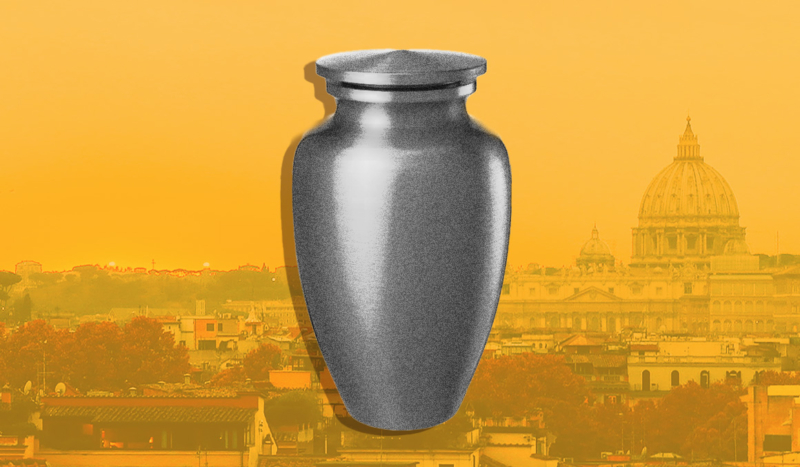
In response to two questions regarding the preservation of the ashes of the deceased following cremation, the Dicastery for the Doctrine of the Faith (DDF) has confirmed that the ashes of cremated persons cannot be scattered into nature, but a small amount of them may be preserved by the family with ecclesiastical approval.
The official response signed on December 9 by Cardinal Víctor Manuel Fernández, Prefect of the DDF and by Pope Francis, answers two questions posed in October to the Dicastery by Cardinal Matteo Maria Zuppi, Archbishop of Bologna, Italy.
In the letter, Zuppi explained that he had formed a commission to give a Christian response to “problems arising from the increasing number of people desiring to cremate the bodies of the deceased and scatter their ashes in nature.”
“The commission also seeks to ensure that economic motivations (due to the lower cost of scattering ashes) do not prevail, and it seeks, moreover, to give indications regarding what to do with the ashes once the term for their preservation has expired,” Zuppi’s letter, quoted by the DDF’s document, reads.
The questions posed by the Archbishop of Bologna were:
1. Taking into account the canonical prohibition against scattering the ashes of the deceased, is it possible to prepare a defined and permanent sacred place for the commingled (combined) accumulation and preservation of the ashes of the baptized, indicating the basic details of each person so as not to lose the memory of their names, similar to what occurs in ossuaries, where the mineralized remains of the deceased are cumulatively deposited and preserved?
2. Can a family be allowed to keep a portion of their family member’s ashes in a place that is significant for the history of the deceased?
In the response, the DDF quotes several existing Vatican documents, including the Instruction “Ad resurgendum cum Christo: Regarding the Burial of the Deceased and the Conservation of the Ashes in the Case of Cremation”, published by the Congregation for the Doctrine of the Faith in August of 2016.
The 2016 Instruction explained that
the reservation of the ashes of the departed in a sacred place ensures that they are not excluded from the prayers and remembrance of their family or the Christian community. It prevents the faithful departed from being forgotten, or their remains from being shown a lack of respect, which eventuality is possible, most especially once the immediately subsequent generation has too passed away. Also it prevents any unfitting or superstitious practices.
The new DDF document says, “This regulation still retains all its validity.”
The new DDF document also explains that
the ashes of the deceased person, moreover, come from the material remains that were part of the person’s historical journey —so much so that the Church shows particular care and devotion concerning the relics of the saints. This attention and remembrance also leads us to have an attitude of sacred respect toward the ashes of the deceased, which we conserve in a sacred place suitable for prayer, sometimes located near the churches visited by the family and neighbors of the deceased.
The official Vatican document therefore concluded with the following answers:
A) “For the reasons listed above, a defined and permanent sacred place can be set aside for the commingled (combined) accumulation and preservation of the ashes of deceased baptized persons, indicating the identity of each person so as not to lose the memory of their names.”
B) “In addition, the ecclesiastical authority, in compliance with current civil norms, may consider and evaluate a request by a family to preserve in an appropriate way a minimal part of the ashes of their relative in a place of significance for the history of the deceased person, provided that every type of pantheistic, naturalistic, or nihilistic misunderstanding is ruled out and also provided that the ashes of the deceased are kept in a sacred place.”

